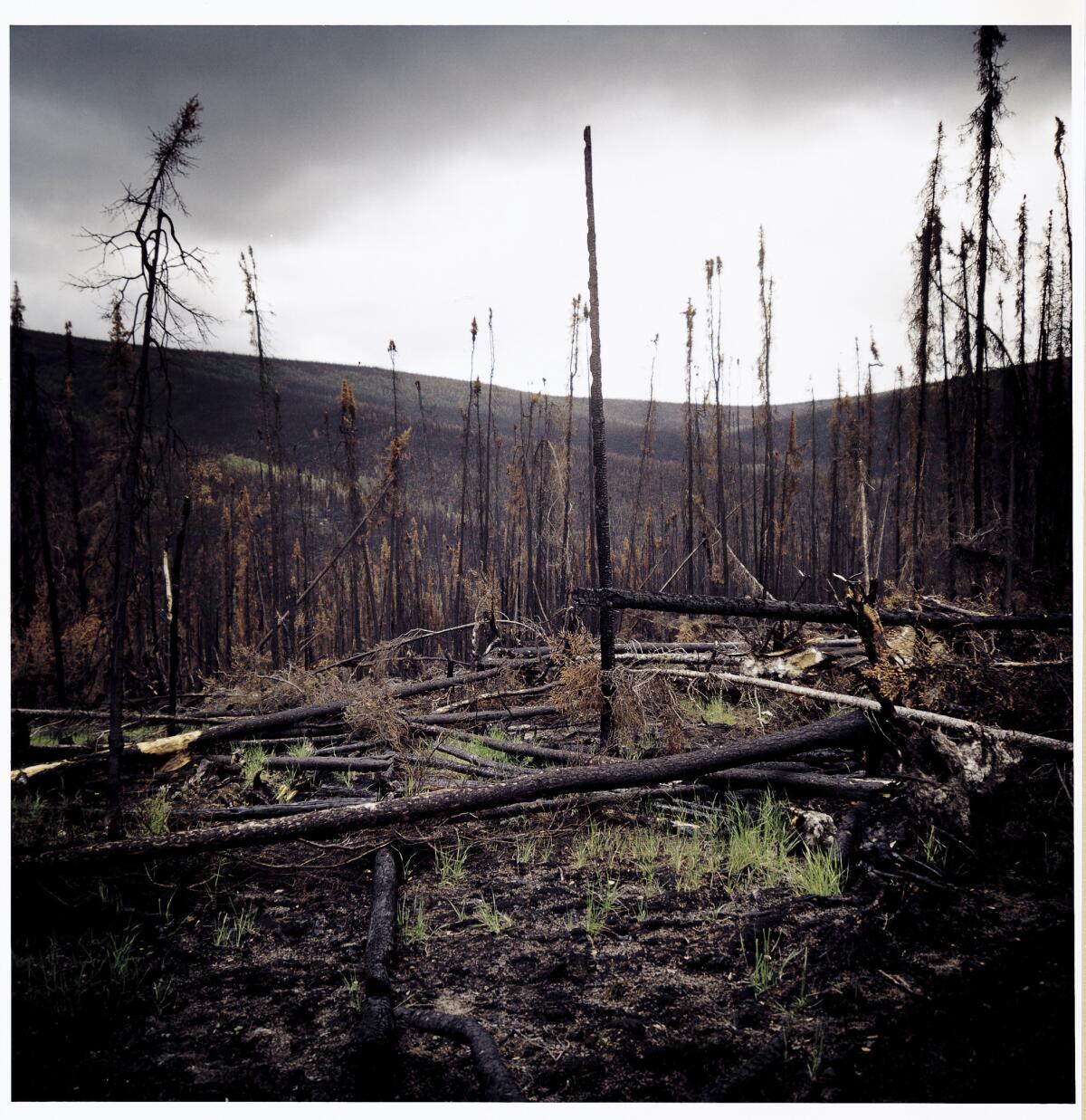Alaska’s boreal forests burning more with climate change

- Share via
The largest U.S. wildfires in the last decade of record-breaking blazes have been in the wilds of Alaska, where fires have blackened more than a half-million acres at a time.
A new study predicts more of the same for North America’s boreal forests, the Far North belt of spruce and fir trees that extends from interior Alaska across Canada.
A warming climate could promote so much wildfire in the boreal zone that the forests may convert to deciduous woodlands of aspen and birch, researchers said.
“In the last few decades we have seen this extreme combination of high severity and high frequency” wildfire in the study area of interior Alaska’s Yukon Flats, said University of Illinois plant biology Prof. Feng Sheng Hu.
Hu and the co-authors of a paper published Monday in the Proceedings of the National Academy of Sciences used charcoal records developed from sediment corings from 14 Yukon Flats lakes to reconstruct a fire history of the area.
They found that fire severity increased during a warm, dry period known as the Medieval Climate Anomaly, which lasted for several hundred years until the onset of the Little Ice Age in the 1500s.
An examination of pollen records in the lake corings also showed that during that warm period, black spruce abundance fell and aspens became more common.
Researchers said the same plant succession is evident in Alaska today as aspen sprouts in recently burned areas.
The spread of less flammable deciduous trees and the cooler, wetter conditions of the Little Ice Age put a halt to the medieval rise in wildfire. Conifers, the ecosystem’s late-succession trees, once again became dominant.
But it may be so warm in the future that deciduous forests also regularly burn, Hu said, perpetuating a post-fire ecosystem of aspen and birch across the boreal belt.
“The magnitute of warming that we’re going to see … by the end of the century is just going to be so different from anything we have seen for the last 10,000 years at least,” he said.
Accelerated wildfire could also unlock vast amounts of forest carbon, contributing to greenhouse gases. “The more important implication there is [that] you’re probably going to release a substantial fraction of the carbon that has been stored in the soil,” Hu said.







